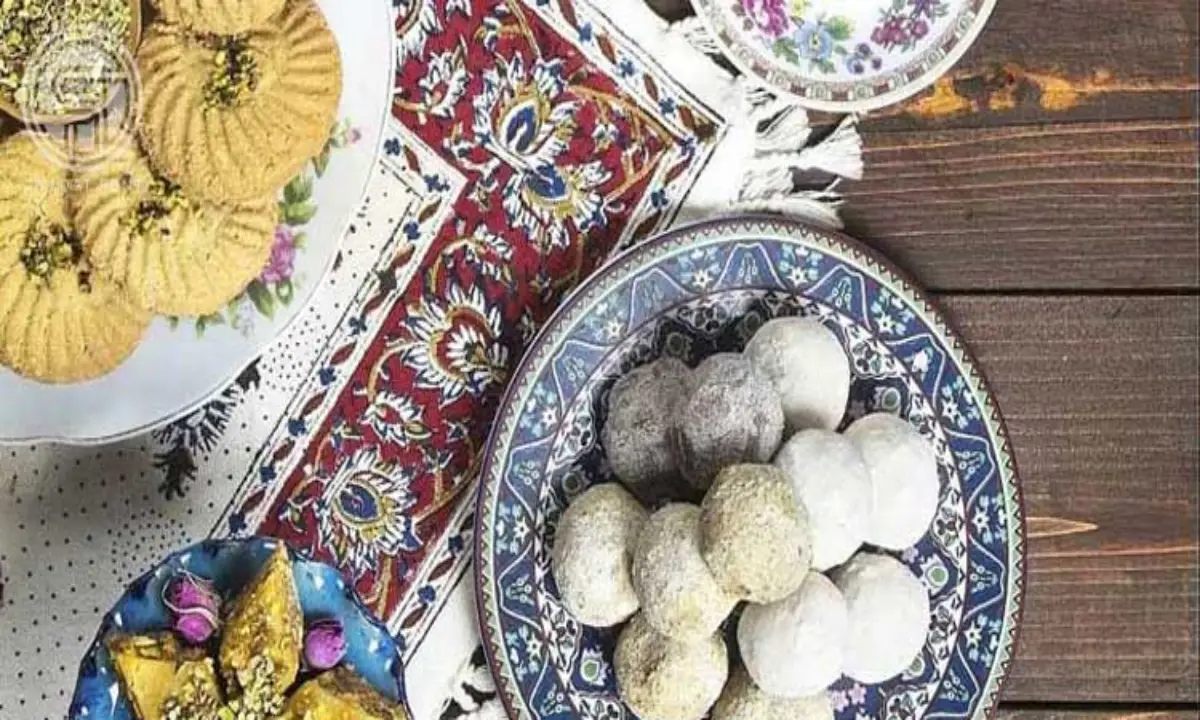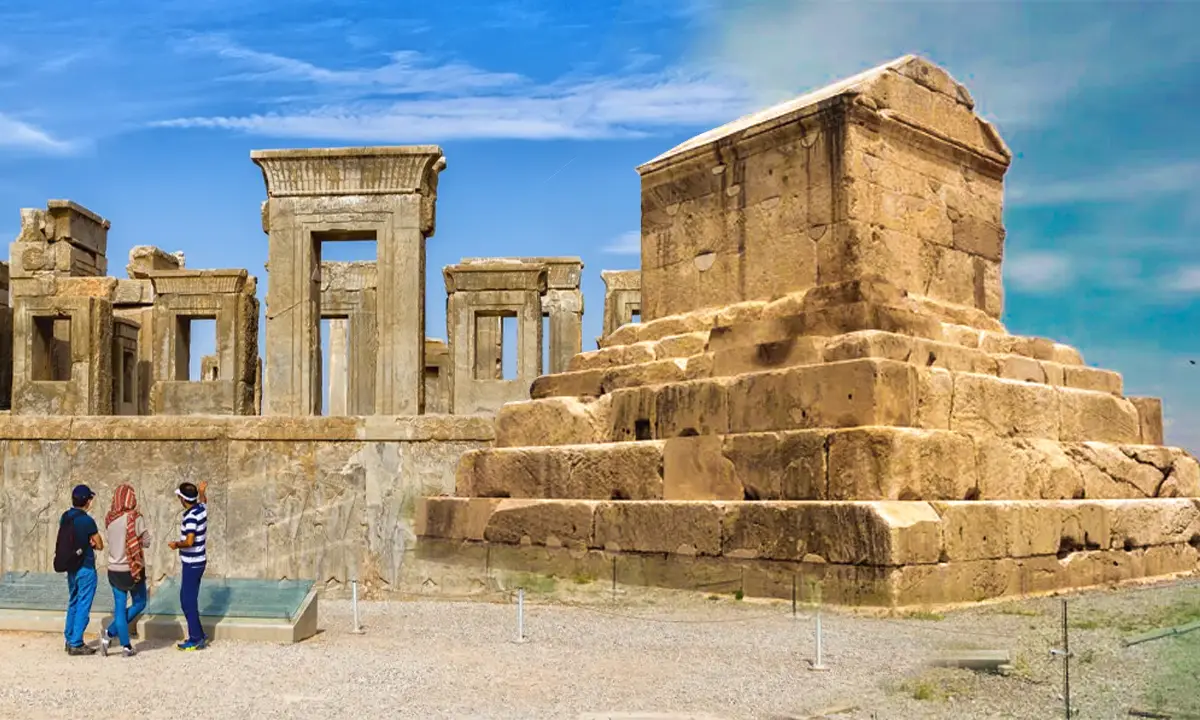Top Tourist Cities of Iran | 2024 Update
![]() Author : asal | Date : Saturday 26 July 2025 15:44
Author : asal | Date : Saturday 26 July 2025 15:44
![Top Tourist Cities of Iran [2023 Update] tourist cities](/storage/www/blogs/2023/eng/1402.07.19/Top_Tourist_Cities_of_Iran.webp)
If you are planning a trip to Iran, especially for the first time, one of the first things you will want to know is which cities are the most popular tourist destinations in Iran, so you can see the most unique Iran attractions in your limited time. What are the Top Tourist Cities of Iran?
- Tehran
- Isfahan
- Shiraz
- Yazd
- Tabriz
- Mashhad
- Kerman
- Qom
- Kashan
- Hamadan
- Kish
You can start your journey and adventure from anywhere in Iran. In this article, We are going to introduce you to some of the most famous tourist cities in Iran so that you can get familiar with these spectacular tourist cities before traveling to Iran. If you also want to know about these cities and their eye-catching attractions, stay tuned.
Tehran, the capital city of Iran
When we arrive in Tehran, the first thing that may come to mind is traffic and pollution because it is the most populated city in the country and has been the capital of Iran for more than 200 years. But the hustle and bustle of this city does not cause it to ignore its history and tourist attractions. Tehran is one of the top five tourist destinations in Iran and has many traditional and modern bazaars and shopping malls with a variety of products. For traveling to this perfect city, you can use car rental in Iran to have a great vacation and visit all the best parts of Tehran.
What are the attractions of Tehran?
- Golestan Palace: A UNESCO World Heritage site, this palace complex is one of the oldest in Tehran and showcases a mix of Persian and Western architectural styles.
- National Museum of Iran: This museum comprises two complexes: the Museum of Ancient Iran and the Museum of the Islamic Era. They together provide a comprehensive view of the country's history and civilization.
- Tehran Grand Bazaar: A sprawling, historic market where you can find everything from jewelry and carpets to spices and everyday goods.
- Milad Tower: The sixth-tallest tower in the world, it offers panoramic views of the city from its observation deck.
- Azadi Tower (Freedom Tower): A landmark of Tehran, this monument was built in 1971 to commemorate the 2,500th anniversary of the Persian Empire.
- Tehran Museum of Contemporary Art: Home to one of the most valuable collections of Western modern art outside Europe and North America, as well as important pieces by Iranian artists.
- Sa'dabad Complex: A collection of palaces and galleries spread across a vast garden, previously used by the Pahlavi dynasty.
- Niavaran Complex: Another royal complex, which includes the elegant Niavaran Palace and the Sahebqraniyeh Palace.
- Tabiat Bridge: An award-winning pedestrian bridge connecting two public parks, Taleghani Park and Abo-Atash Park. It's a favorite spot for locals and visitors alike.
- Darband: A popular recreational region at the base of the Alborz Mountains, filled with restaurants, cafes, and hiking trails.
- Carpet Museum of Iran: Showcases a wide range of Persian carpets from various regions and eras.
- Jewelry Museum: Houses the National Jewels of Iran, including the world's largest pink diamond.
- Holy Defense Museum: An expansive complex that provides an in-depth look at the Iran-Iraq War through various exhibits and multimedia presentations.
- Jamshidieh Park (Stone Garden): Located in the northern part of the city, this park offers a peaceful retreat with stone pathways, small lakes, and views of the city and mountains.
- Pardisan Park: A large recreational and environmental complex that also includes a wildlife park.
Cost of travel to Tehran
| Category | Estimated Cost | Description |
|---|---|---|
| Airfare | $400 - $800 | Round-trip fare from major international airports. Prices vary greatly based on departure city |
| Accommodation | $30 - $150 per night | Budget options may cost around $30, while mid-range hotels might average $60, and luxury over $150 per night. |
| Food | $10 - $30 per day | Street food and inexpensive meals can cost around $10, whereas dining in mid-range restaurants will be closer to $30 per day. |
| Transportation | $5 - $20 per day | Local transportation including taxis, buses, and the metro. The cost depends on how much traveling around the city you plan to do. |
| Entertainment | $5 - $50 per day | Entry fees for museums and historical sites, shows, or other attractions. Prices vary based on interests. |
| Miscellaneous | $10 - $30 per day | Miscellaneous expenses such as souvenirs, tips, and emergency purchases. |
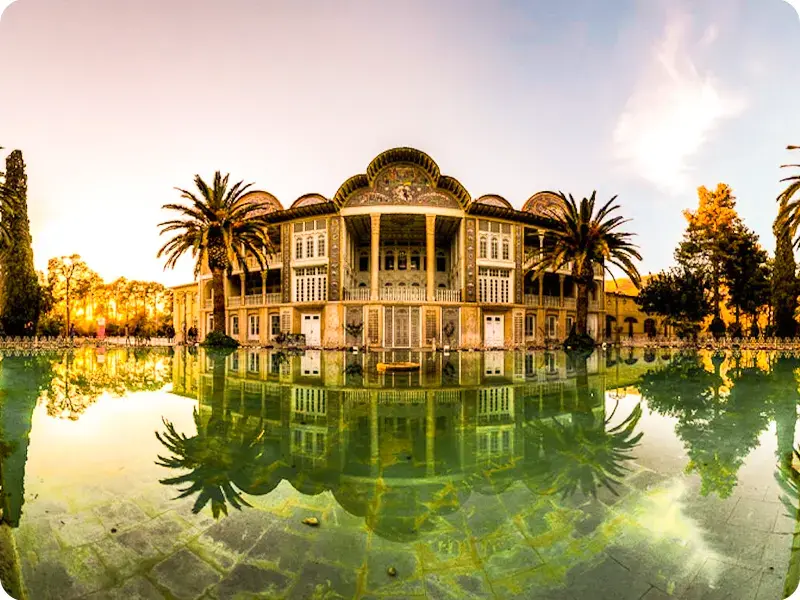
Isfahan, the city of turquoise domes
Without a doubt, Isfahan is one of the best cities in Iran, as well as one of the country's major ancient towns. This lovely city is also called the "Half of the World," since Isfahan, with its 5,000 ancient sites and locations dating back thousands of years, is deserving of the term. The city's main plaza, Naghsh-e Jahan, is one of the world's largest, measuring 565 meters in length and 170 meters in breadth. You should plan a few days to visit this top tourist city in Iran since there are old sites around.
What are the attractions of Isfahan?
- Naqsh-e Jahan Square (Imam Square): One of the largest city squares in the world and a UNESCO World Heritage site. It's surrounded by important buildings and is a hub of activity with shops, restaurants, and horse-drawn carriages.
- Shah Mosque (Imam Mosque): Located on the south side of Naqsh-e Jahan Square, it's an architectural masterpiece with magnificent tilework and towering minarets.
- Sheikh Lotfollah Mosque: A smaller, yet incredibly ornate mosque on the eastern side of Naqsh-e Jahan Square. It's renowned for its exquisite tilework and unique design.
- Ali Qapu Palace: Positioned on the west side of the square, this six-story palace was once used for Safavid royal receptions and has a famous elevated terrace.
- Chehel Sotoun Palace: A pavilion in the middle of a park, known for its wooden column’s frescoes, and paintings on ceramic, which depict scenes from the Safavid era.
- Si-o-se-pol (The Bridge of 33 Arches): A historic bridge over the Zayanderud River with distinctive architecture and a popular gathering spot in the evenings.
- Khaju Bridge: Another historic bridge over the Zayanderud, which also serves as a dam. Its central pavilion was once a royal meeting place.
- Vank Cathedral: Located in the Armenian Quarter (Jolfa) of Isfahan, this cathedral is a testament to the city's Armenian heritage and is known for its beautiful frescoes and intricate tilework.
- Hasht Behesht Palace: Translated as "Eight Paradises," it's an example of Safavid architecture with lovely wall paintings and a beautiful garden.
- Qeysarie Gate: The main entrance to the Grand Bazaar of Isfahan, located on the northern side of Naqsh-e Jahan Square.
- Isfahan's Grand Bazaar: An extensive marketplace offering everything from handicrafts and Persian rugs to spices and jewelry.
- Jameh Mosque of Isfahan: A UNESCO World Heritage site, this grand mosque showcases architectural styles from various eras, given its millennium-long construction history.
- Menar Jonban (Shaking Minarets): A mausoleum where, if one minaret is shaken, the other will shake in unison.
- Atashgah (Zoroastrian Fire Temple): An ancient fire temple located on a hill, offering views of the city.
- Birds Garden: A sanctuary for various bird species, both native and from other parts of the world.
Cost of travel to Isfahan
| Category | Estimated Cost | Description |
|---|---|---|
| Airfare | $400 - $800 | Round-trip fare from major international airports. Prices vary greatly based on departure city. |
| Accommodation | $20 - $100 per night | Budget options may cost around $20, while mid-range hotels might average $50, and luxury over $100 per night. |
| Food | $8 - $25 per day | Inexpensive meals and street food might cost around $8, whereas dining in mid-range restaurants will be closer to $25 per day. |
| Transportation | $3 - $15 per day | Local transportation including taxis, buses, and the metro. The cost depends on how much traveling around the city you plan to do. |
| Entertainment | $3 - $30 per day | Entry fees for museums, historical sites, and cultural shows. Prices vary based on interests. |
| Miscellaneous | $5 - $20 per day | Miscellaneous expenses such as souvenirs, tips, and emergency purchases. |
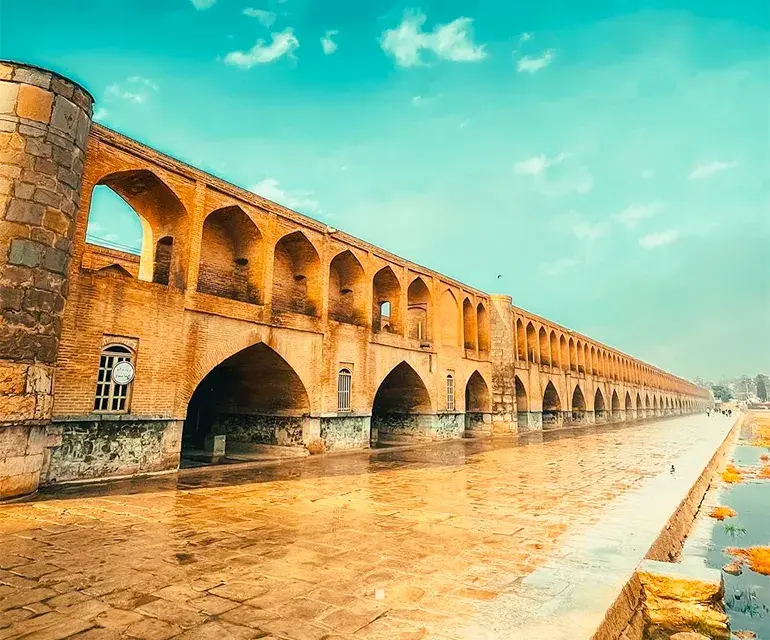
Shiraz, the capital of Iranian culture and literature
Shiraz is one of the top tourist cities in Iran that all tourists will choose to visit. Shiraz is a very beautiful, historical, and even legendary city in Iran that has been the cradle of culture and beauty for a long time and we can say one of the Iran tourism places is this city. Shiraz can’t be described in words, and if you are a traveler and have traveled to this beautiful city, you will have pleasant travel memories. Shiraz is one of the top five tourist cities in Iran, and the tombs of some of the best Iranian writers and poets, such as Hafez, Saadi, Khajavi Kermani, etc., are located in this city.
What are the attractions of Shiraz?
- Persepolis: Located northeast of Shiraz, this ancient ceremonial capital of the Achaemenid Empire is a UNESCO World Heritage site and is one of Iran's most significant archaeological sites.
- Nasir al-Mulk Mosque (Pink Mosque): Famous for its stunning stained-glass windows, which produce a kaleidoscope of colors when sunlight streams through in the mornings.
- Eram Garden (Bagh-e Eram): A historic Persian garden with beautifully landscaped gardens, flowing water, and a classic Qajar-era palace.
- Tomb of Hafez (Hafeziyeh): Dedicated to the renowned Persian poet Hafez, this site is a place of literary pilgrimage with a serene garden and a memorial hall.
- Tomb of Saadi (Saadieh): Another mausoleum dedicated to a great Persian poet, Saadi, which is similarly revered and visited by literature enthusiasts.
- Vakil Bazaar: A historical market with beautiful courtyards, caravanserais, bathhouses, and old shops selling all sorts of Persian crafts and goods.
- Vakil Mosque: Located near the Vakil Bazaar, it's known for its beautiful courtyards, tilework, and elegant pillars.
- Arg of Karim Khan: A citadel located in the downtown area of Shiraz. It was the presidential palace of Karim Khan of the Zand dynasty.
- Shah-e-Cheragh Shrine: The mausoleum of the brothers Ahmad and Muhammad, sons of Imam Musa al-Kazim. It's an important pilgrimage site and is known for its mirror tilework interior.
- Qavam House (Narenjestan e Ghavam): A traditional and historic house known for its beautiful garden, mirrored porch, and paintings on its ceilings and walls.
- Afif-Abad Garden: A garden that houses a historical mansion, a museum (displaying old weapons), and a Persian garden.
- Zinat ol-Molk: Another historic mansion, showcasing traditional Qajar architecture and beautifully painted walls and ceilings.
- Jahan Nama Garden: One of the oldest gardens in Shiraz, offering great views of the city.
- Pasargadae: While located some kilometers north of Shiraz, it's often visited from the city. This UNESCO World Heritage site is the ancient capital of the Achaemenid Empire and the tomb of Cyrus the Great.
- Khaju Kermani: Just outside of the Qur'an Gate, the tomb of this famous poet offers a panoramic view of Shiraz.
Cost of travel to Shiraz
| Category | Estimated Cost | Description |
|---|---|---|
| Airfare | $400 - $800 | Round-trip fare from major international airports. Prices vary greatly based on departure city. |
| Accommodation | $20 - $120 per night | Budget lodging might cost around $20, mid-range hotels average about $60, and luxury accommodations could exceed $120 per night. |
| Food | $10 - $30 per day | Casual dining and street food may cost about $10, while nicer restaurant meals can go up to $30 per day. |
| Transportation | $4 - $15 per day | Costs for local transit like buses, taxis, and rideshares, depending on the extent of travel within the city. |
| Entertainment | $5 - $40 per day | Fees for entering historical sites, museums, and engaging in local tours or experiences. |
| Miscellaneous | $5 - $25 per day | Additional expenses such as gifts, tips, and unplanned purchases. |
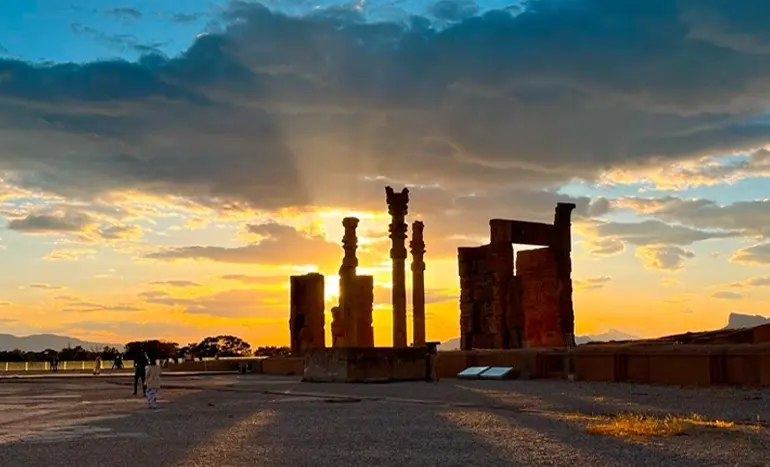
Yazd, the city of windbreakers
It is impossible to talk about the tourist cities of Iran and forget the name of Yazd. The city of Yazd is the first city in Iran to be named on the UNESCO World Heritage List and is one of the few cities that are still It preserves its traditional texture, immerses tourists in its history, and is very suitable for hiking.
What are the attractions of Yazd?
- Yazd Jameh Mosque (Friday Mosque): A grand mosque known for its magnificent entrance portal, tall minarets, and exquisite tilework.
- Old City of Yazd: Wander through its narrow alleys and mud-brick buildings, and discover traditional bazaars, hammams (bathhouses), and more.
- Amir Chakhmaq Complex: A prominent structure in Yazd, this square is known for its three-story facade of symmetrical sunken alcoves and two tall minarets.
- Dowlat Abad Garden: A beautiful Persian garden featuring the tallest wind catcher in Iran, which provides natural ventilation to the mansion.
- Zoroastrian Sites:
- Ateshkadeh (Fire Temple): Houses a fire that has reportedly been burning since 470 AD.
- Towers of Silence (Dakhmeh): Elevated structures where Zoroastrians traditionally placed the dead to be exposed to the elements and vultures.
- Water Museum: Offers insights into the unique qanat system of underground channels that bring water from the mountains.
- Alexander's Prison: Despite its name, the site wasn't a prison and wasn't built by Alexander the Great. It's a 15th-century domed school — but local legends have given it this intriguing name.
- Kharanaq: About an hour from Yazd, this ancient abandoned mud-brick village offers a glimpse into the past. Nearby are also the ruins of an old caravanserai and a shaking minaret.
- Bagh-e Dolat Abad: A historical mansion with a large garden. Its wind catcher is one of the tallest in Iran.
- Fahadan Historic Neighborhood: A well-preserved district with winding alleys, traditional houses, and historic mosques.
- Lari House: A splendid example of a traditional house in Yazd, showcasing Persian architectural elements.
- Markar Clock Tower: An old clock tower and a Zoroastrian information center, marking the center of the Zoroastrian community in the city.
- Time Museum: A museum dedicated to the art and science of time-keeping, showcasing various timepieces from different eras.
Cost of travel to Yazd
| Category | Estimated Cost | Description |
|---|---|---|
| Airfare | $400 - $800 | Round-trip fare from major international airports. Prices vary based on departure city and season. |
| Accommodation | $20 - $100 per night | Accommodation options range from budget guesthouses at about $20 to luxury hotels costing upwards of $100 per night. |
| Food | $10 - $25 per day | Dining costs can range from street food and inexpensive meals at around $10 to more upscale dining experiences costing about $25 per day. |
| Transportation | $3 - $15 per day | Local transportation includes taxis, buses, and rental bikes, varying based on travel frequency and distances. |
| Entertainment | $3 - $30 per day | Entrance fees to historical sites like the Towers of Silence, the Fire Temple, and the Old City of Yazd. |
| Miscellaneous | $5 - $20 per day | Includes tips, souvenirs, and other incidental expenses. |
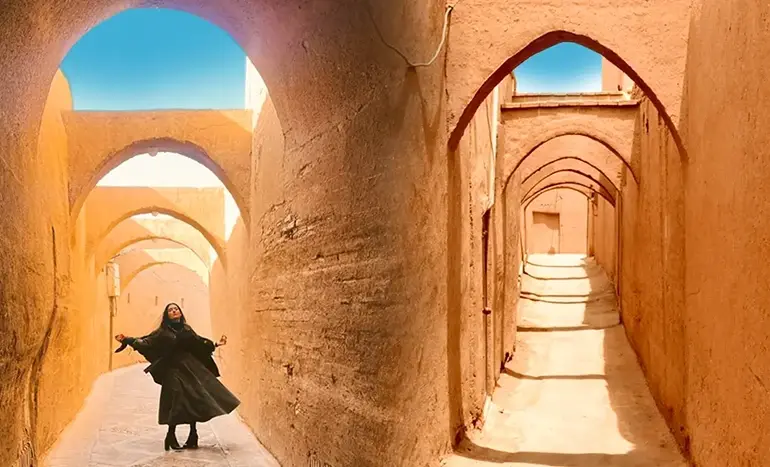
Tabriz, the capital of Islamic tourism in 2018
Tabriz is Iran's third-largest city and holds a significant place in our country's history. Tabriz is a historic city with numerous old structures as well as ancient history and culture. Tabriz is also known for its traditional and modern bazaars, as well as the quality of the things they sell. The World Council of Handicrafts has designated Tabriz as the world city of carpet weaving in recognition of its distinctive carpets and rugs. At least, we can say one of the best cities in Iran is this city.
What are the attractions of Tabriz?
- Tabriz Historic Bazaar Complex: A UNESCO World Heritage site, this bazaar is one of the oldest and largest in the Middle East. It offers a myriad of goods and showcases a variety of Iranian architectural styles.
- El Goli (Shah Goli) Park: A large historic park around an artificial lake. It's a popular spot for picnics and boat rides.
- Kandovan: Located close to Tabriz, this ancient village is famous for its unique rock-carved houses that remain inhabited. It's often compared to Turkey's Cappadocia.
- Blue Mosque (Masjed-e Kabud): Known for its intricate blue mosaics, the mosque was severely damaged in an earthquake in the 18th century, but parts of it have been restored.
- Tabriz Jameh Mosque: A significant historical mosque with beautiful architecture and tilework.
- Arg of Tabriz: An ancient citadel and a national heritage site.
- Azerbaijan Museum: Located near the Blue Mosque, it's the major archaeological and historical museum in Tabriz, showcasing artifacts from various periods of the region's history.
- Constitution House (Khaneh Mashrouteh): A historical edifice where significant events related to the Persian Constitutional Revolution took place.
- Saint Mary's Church: An ancient Assyrian church, one of the oldest in the world.
- Behnam House: A historical building with a beautiful garden, showcasing Qajar era architecture and decorations.
- Iron Age Museum: Located in the basement of the city's municipal building, it displays artifacts from a burial site dating back to the Iron Age.
- Qajar Museum (Amir Nezam House): This historical house showcases elements from the Qajar period and provides insights into the lifestyle of the era.
- ahand Mountain: Located south of Tabriz, it's a popular spot for hiking and skiing during the winter months.
- Shahryar Literature Museum: Dedicated to the renowned Azerbaijani poet Shahriar, it offers an in-depth look at his life and works.
- Poets' Tomb (Maqbaratoshoara): A mausoleum holding the remains of many of Iran's literary figures.
Cost of travel to Tabriz
| Category | Estimated Cost | Description |
|---|---|---|
| Airfare | $400 - $800 | Round-trip fare from major international airports. Prices vary greatly based on departure city and travel season. |
| Accommodation | $25 - $100 per night | Budget accommodations might cost around $25, while mid-range hotels could be about $50, and luxury options may exceed $100 per night. |
| Food | $10 - $30 per day | Costs for dining out range from inexpensive local meals at $10 to more upscale restaurant meals at around $30. |
| Transportation | $5 - $20 per day | Local transportation using taxis, buses, and possibly rental cars, with costs depending on the extent of daily travel. |
| Entertainment | $5 - $30 per day | Entry fees for museums, historical sites like the Tabriz Historic Bazaar Complex, and other attractions. |
| Miscellaneous | $5 - $25 per day | Additional expenses such as souvenirs, tips, and unexpected purchases. |
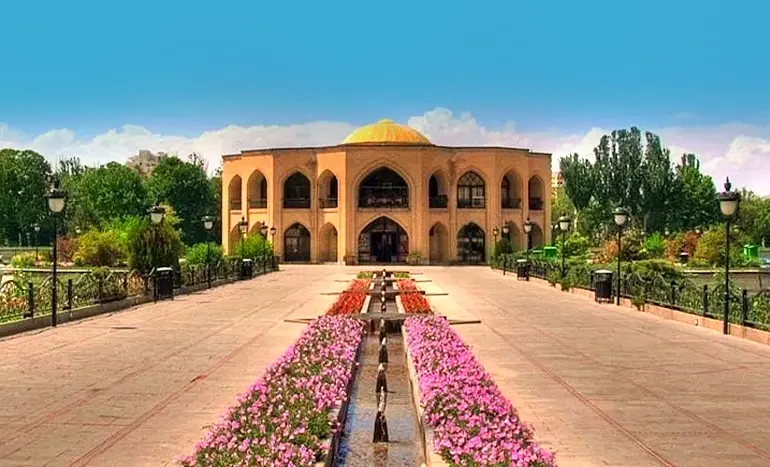
Mashhad, the spiritual capital of Iran
Mashhad is also known as the religious capital of Iran and is the most famous religious country in the world. Tourist City in Iran Many Iranian and foreign tourists are eager to see Mashhad and the attractions of this beautiful city. Although Mashhad is known as the holy shrine of Imam Reza, many tourist places introduce some of the sights of Mashhad, and it's one of the best cities to visit in Iran.
What are the attractions of Mashhad?
- Imam Reza Shrine Complex: The vast complex is not only a place of pilgrimage for millions of Shia Muslims but also an architectural marvel with golden domes, minarets, and exquisite tilework. Within the complex are several mosques, a library, a museum, and the Goharshad Mosque.
- Goharshad Mosque: Located within the Imam Reza Shrine complex, this mosque is a masterpiece of Persian architecture with its grand courtyard, tilework, and historical inscriptions.
- Nader Shah Mausoleum: This is the tomb of Nader Shah, the founder of the Afsharid dynasty. The complex also includes a museum showcasing weapons and exhibits related to Nader Shah's campaigns.
- Kooh Sangi Park: A popular recreational area with two large rock formations from which it gets its name (Kooh Sangi means "Stone Mountain").
- Water Waves Land: An amusement park ideal for families, offering a variety of water-based attractions and rides.
- Razavi University of Islamic Sciences: A prominent seminary and university near the Imam Reza Shrine, with beautiful architecture.
- Mellat Park: One of the largest and most beautiful parks in Mashhad, providing green space and recreational areas for both locals and tourists.
- Malek's House: A historical house turned into a museum, showcasing the life and times of the Qajar era.
- Tomb of Ferdowsi: While it's located about 30 km away from Mashhad in the town of Tus, many visitors to Mashhad make a trip to the resting place of Ferdowsi, the renowned Persian poet and the author of the epic Shahnameh (Book of Kings).
- Haruniyeh Dome: Also in Tus, this structure is where some believe the mystic poet Farid ud-Din Attar is buried. It's an example of the Ilkhanate era's architectural style.
- Khorasan Great Museum: This museum provides a comprehensive overview of the history of the Khorasan region, showcasing artifacts from pre-Islamic and Islamic periods.
- Mashhad Carpet Bazaar: Known for the fine Khorasani carpets and rugs, you can explore and purchase these masterpieces of Persian artistry here.
- Vakilabad Park: A serene green space perfect for relaxation, picnics, and walking.
- Chalidareh Dam: Located on the outskirts of Mashhad, this dam is a picturesque spot for a day trip, with boating facilities and a pleasant environment.
Cost of travel to Mashhad
| Category | Estimated Cost | Description |
|---|---|---|
| Airfare | $400 - $800 | Round-trip fare from major international airports, varying significantly based on departure city and season. |
| Accommodation | $30 - $150 per night | Options range from budget accommodations around $30 to mid-range hotels averaging $70, and luxury hotels that could exceed $150 per night. |
| Food | $10 - $40 per day | Costs for meals range from inexpensive local eateries at $10 to upscale dining at about $40 per day. |
| Transportation | $5 - $20 per day | Local transportation such as taxis and buses, with costs dependent on how extensively you plan to travel around the city. |
| Entertainment | $0 - $20 per day | Most of the attractions are religious sites, which generally do not charge entrance fees, but there might be costs associated with guided tours or special access areas within these sites. |
| Miscellaneous | $5 - $30 per day | Includes expenses like souvenirs, particularly religious or cultural items, tips, and incidental purchases. |
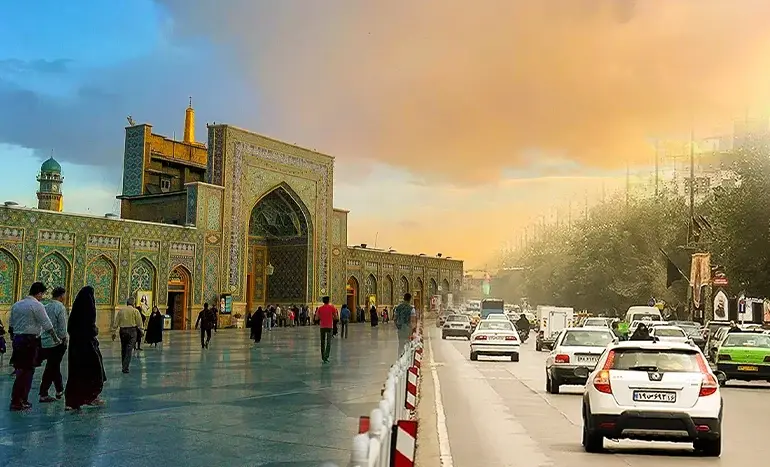
Kerman, The Jewel of Southeastern Iran
In the heart of southeastern Iran, Kerman stands as a vibrant testament to the nation's rich tapestry of history and culture. Once a pivotal hub on the ancient Silk Road, the city now beautifully marries its storied past with a dynamic present. As one navigates its labyrinthine bazaars, the aroma of traditional spices fills the air, while the architectural majesty of its mosques and gardens narrates tales of bygone dynasties. Set against the backdrop of the expansive Lut Desert, Kerman emerges not just as an oasis of physical beauty but also as a beacon of Persian heritage and resilience.
What are the attractions of Kerman?
- Ganjali Khan Complex: A major Safavid-era center that includes a square, bazaar, mosque, caravanserai, bathhouse, and water reservoir. The bathhouse has been transformed into an anthropology museum.
- Jameh Mosque of Kerman: An impressive 14th-century mosque known for its beautiful tile work and architecture.
- Kerman Bazaar: One of the oldest trading centers in Iran, this bazaar is a sprawling complex of shops, tea houses, and historic buildings.
- Harandi Garden & Museum: Formerly the residence of a local governor, it's now home to the archaeological and musical instrument museums.
- Fathabad Garden (Bagh-e Fathabad): A beautiful Persian garden located a short distance from Kerman, exemplifying the traditional garden design of Iran.
- Shazdeh Mahan Garden (Shahzadeh Garden): Located in Mahan, it's a fine example of a Persian garden that draws visitors due to its terraced pools and ornate structures.
- Mahan's Shah Nematollah Vali Shrine: A mausoleum dedicated to the renowned Sufi mystic and poet.
- Rayen Castle: Located southeast of Kerman, it's an ancient adobe citadel that stands as a testament to the architectural marvel of ancient Persians.
- Gonbad-e Jabaliye: An enigmatic stone-made dome whose purpose and origins remain a subject of debate. Some believe it's a Zoroastrian fire temple, while others argue it was a tomb.
- Lut Desert (Dasht-e Lut): One of the hottest and driest places on earth, it's famed for its dunes, rock formations, and the Gandom Beryan plateau.
- Bam and its Cultural Landscape: Located to the southeast of Kerman, the ancient citadel of Bam is one of the most famous historic sites in Iran, especially known for the Arg-e Bam. Though damaged in a 2003 earthquake, restoration efforts are ongoing.
- Zarand Saveh Grand Mosque: A mosque located in Zarand with beautiful plasterwork and tilework.
- Jebal Barez Ski Resort: For those interested in skiing during winter months, this is the place to go in the Kerman province.
- Stone Garden of Sirch: A garden-like expanse filled with naturally formed stone "trees" and other formations, located near the village of Sirch.
Cost of travel to Kerman
| Category | Estimated Cost | Description |
|---|---|---|
| Airfare | $400 - $800 | Round-trip fare from major international airports. Prices can vary greatly depending on the departure city and season. |
| Accommodation | $20 - $100 per night | Budget lodging options might start around $20, mid-range hotels could cost about $50, and luxurious accommodations could go up to $100 per night. |
| Food | $10 - $30 per day | Dining costs for local and traditional meals start at $10, with more upscale dining options available up to $30 per day. |
| Transportation | $5 - $20 per day | Local transportation costs including taxis, buses, and possible car rentals, depending on the extent of travel around the city and to nearby attractions. |
| Entertainment | $5 - $25 per day | Entry fees for historical sites and museums, such as the Ganjali Khan Complex, Kerman Bazaar, and excursions to the Kaluts in the Lut Desert. |
| Miscellaneous | $5 - $20 per day | Includes expenses for souvenirs like local handicrafts, tips, and other incidental purchases. |
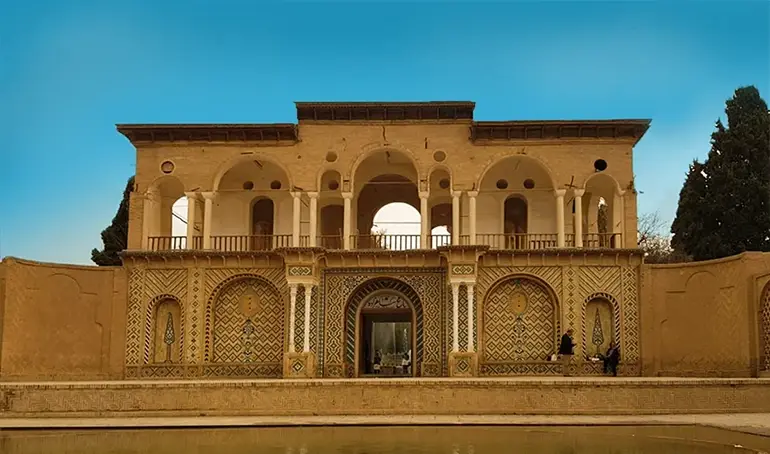
Qom, The Spiritual Heartbeat of Iran
Nestled in the central plains of Iran, Qom stands as the spiritual nucleus of the nation. Revered as the epicenter of Shia theology and learning, the city resonates with deep religious fervor and historical significance. Home to the magnificent shrine of Hazrat Fatima Masoumeh, Qom attracts millions of pilgrims annually, each seeking solace, knowledge, and a connection to their faith. Beyond its religious prominence, the city's intricate architecture, ancient libraries, and bustling seminaries reflect a rich tapestry of Islamic scholarship and Persian culture, making Qom an essential destination for both the devout and the curious.
What are the attractions of Qom?
- Shrine of Hazrat Fatima Masumeh: The most significant attraction in Qom, this shrine is dedicated to Lady Fatima Masumeh, the sister of the eighth Shia Imam. With its glittering golden dome and minarets, intricate tilework, and large courtyards, it's a masterpiece of Islamic architecture and a major pilgrimage site.
- Jamkaran Mosque: Located on the outskirts of Qom, this mosque is believed by many Shia Muslims to be a place where the twelfth Imam, Imam Al-Mahdi, will reappear.
- Feyzieh Seminary: One of the oldest and most prominent theological schools in the Shia world, where numerous scholars and religious leaders have studied.
- Qom Bazaar: Like many Iranian cities, Qom has a traditional bazaar where you can experience the local way of life, purchase religious artifacts, and textiles, and enjoy local foods.
- Qom River: Also known as Qomrood, this river runs through the city, and its banks provide a peaceful place to relax.
- Astan-e Quds Museum: Located within the Hazrat Fatima Masumeh Shrine complex, this museum displays various historical and religious artifacts.
- Khezr Nabi Mausoleum: This site is dedicated to the prophet Khezr and showcases some beautiful Islamic architecture.
- Mar'ashi Najafi Library: One of the largest religious libraries in Iran, it houses a vast collection of Islamic manuscripts, books, and documents.
- Qom Salt Dome: A geologically interesting site located outside the city, where you can witness unique salt formations.
- The Green Dome: An iconic structure in Qom, dedicated to Ayatollah Borujerdi, a significant Shia scholar of the 20th century.
- Paminar School: An ancient seminary with beautiful architecture, reflective of the city's long-standing tradition of religious education.
- Cohesive Desert: Located near Qom, it's an interesting destination for those looking to experience the desert landscapes of Iran.
Cost of travel to Qom
| Category | Estimated Cost | Description |
|---|---|---|
| Airfare | $400 - $800 | Round-trip fare from major international airports. Prices vary based on departure city and booking time. |
| Accommodation | $30 - $150 per night | Budget lodging might start at around $30, while mid-range hotels typically cost about $70, and more luxurious options could reach $150 per night. |
| Food | $10 - $40 per day | Dining costs can range from simple meals at local eateries for $10 to more elaborate dining experiences in higher-end restaurants at $40. |
| Transportation | $5 - $20 per day | Local transportation including taxis, buses, and potential car rentals, with costs depending on travel needs. |
| Entertainment | $0 - $10 per day | Most of Qom's attractions are religious sites, which often have low to no entrance fees, but donations are common. |
| Miscellaneous | $5 - $30 per day | Miscellaneous expenses such as souvenirs, particularly religious or cultural items, tips, and unplanned purchases. |
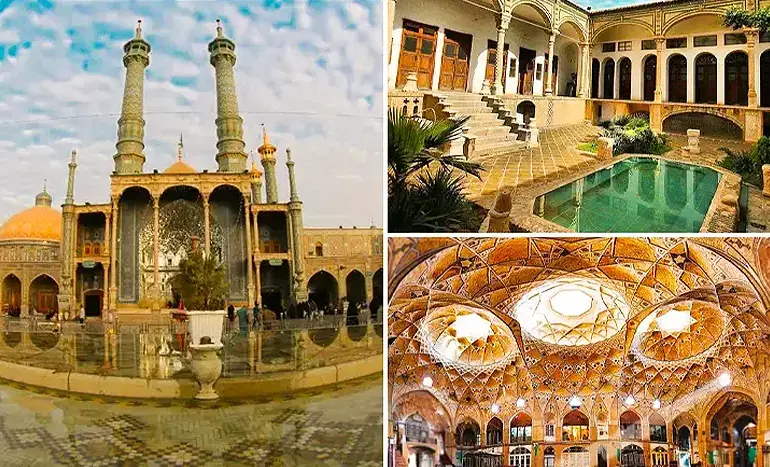
Kashan: A Tapestry of Persian Gardens, Ancient Architecture, and Timeless Traditions
Kashan, set against the arid landscapes of central Iran, is a gem of ancient architecture and rich Persian culture. The city, renowned for its meticulously restored traditional houses and exquisite Persian gardens, offers a journey back in time. Kashan's captivating history stretches from its archaeological wonders, like the Sialk Hill, to its opulent merchant residences, such as Tabatabaei and Borujerdi houses. A visit to the Fin Garden, an epitome of Persian landscaping, reveals tranquil water features juxtaposed with ornate pavilions. Additionally, the city's famed rosewater distilleries and timeless bazaars, brimming with traditional textiles and ceramics, further underscore Kashan's status as a treasure trove of Iranian heritage.
What are the attractions of Kashan?
- Tabatabaei House: A prime example of Kashani residential architecture, this house showcases stunning stucco work, elegant stained-glass windows, and intricate woodwork.
- Borujerdi House: Another iconic merchant's residence, it's famed for its exquisite frescoes, fine carvings, and impressive architectural design.
- Fin Garden (Bagh-e Fin): A UNESCO World Heritage site, this Persian garden combines historical architecture with manicured gardens, water features, and tree-lined paths.
- Sialk Tepe (Tepe Sialk): An ancient archeological site, it provides insights into the prehistoric cultures of the region, making it one of the earliest known human settlements in the Iranian plateau.
- Agha Bozorg Mosque: A masterpiece of Qajar-era architecture, this mosque and theological school stands out for its symmetrical design and sunken courtyard.
- Kashan Bazaar: A bustling market where visitors can immerse themselves in the sights, sounds, and scents of local life, from textiles to spices.
- Sultan Amir Ahmad Bathhouse: An ancient bathhouse showcasing Persian architecture, with domed roofs, intricate tile work, and a unique ambiance.
- Abbasian House: A sprawling historic home known for its intricate designs, vented domes, and hidden chambers.
- Rosewater Distilleries: Kashan is famed for its rosewater production. Visiting the distilleries during the rose harvesting season provides a unique experience.
- Jameh Mosque of Kashan: A grand structure with a history spanning over a millennium, it's known for its beautiful tile work and iconic Shabestan (underground prayer hall).
- Nooshabad Underground City (Ouyi): Located near Kashan, this underground city was a refuge during wartime and is a marvel of ancient engineering.
- Puppet Museum (Museum-e Khayyam): A unique attraction that showcases a range of puppets, representing the diverse cultures and traditions of Iran.
- Traditional Tea Houses: Scattered around the city, these offer visitors a chance to experience authentic Persian hospitality and sample local delicacies.
Cost of travel to Kashan
| Category | Estimated Cost | Description |
|---|---|---|
| Airfare | $400 - $800 | Round-trip fare from major international airports, with prices varying based on departure city and season. |
| Accommodation | $20 - $120 per night | Budget options might start at around $20, while more comfortable boutique hotels can range up to $120 per night, especially for those that are historically preserved homes. |
| Food | $10 - $30 per day | Inexpensive dining and street food might cost around $10, with meals at more upscale restaurants reaching around $30 per day. |
| Transportation | $3 - $15 per day | Costs for local transport such as taxis and buses; relatively inexpensive due to the small size of the city. |
| Entertainment | $5 - $30 per day | Entry fees for visiting places like the Fin Garden, Borujerdi House, and other historic sites. |
| Miscellaneous | $5 - $25 per day | Includes expenses for souvenirs, tips, and other incidental purchases. |
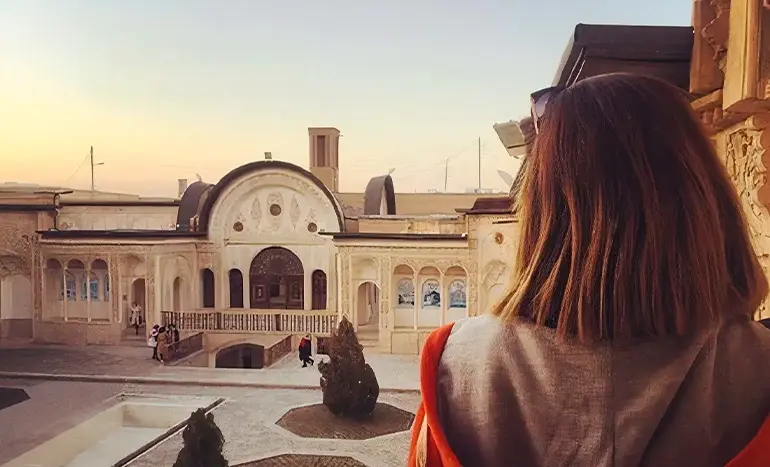
Hamedan, Cradle of Ancient Civilizations and Iran's Historic Gem
Hamedan, often hailed as one of the world's oldest cities, rests at the foot of the Zagros Mountains in western Iran. Its storied past, deeply intertwined with the tales of ancient empires like the Medes and Achaemenids, is echoed in its archaeological wonders and historic sites. Landmarks such as the Ganj Nameh inscriptions and the tomb of Avicenna, the famed Persian polymath, speak volumes of its rich contribution to history and science. The city's intricate labyrinth of bazaars, coupled with its traditional crafts like ceramic works and leather products, paints a vivid tableau of a vibrant culture that has stood the test of time. Hamedan, with its blend of ancient allure and contemporary charm, offers a unique tapestry of Iran's enduring legacy.
What are the attractions of Hamedan?
- Ganj Nameh Inscriptions: Carved into the side of a mountain, these inscriptions date back to the times of Darius the Great and Xerxes I of the Achaemenid Empire.
- Tomb of Avicenna (Ibn Sina): A monument dedicated to the great Persian polymath Avicenna, who made significant contributions to various fields, especially medicine.
- Alavian Dome: A Seljuk-era mausoleum and mosque showcasing exquisite stucco work and architectural designs.
- Ester and Mordechai Tomb: Believed to be the resting place of the biblical figures Esther and Mordechai, this site is an important pilgrimage for Jewish people and showcases Persian-Jewish heritage.
- Hegmataneh (Ecbatana) Archaeological Site: The ancient capital of the Medes, this site provides insights into the early periods of Iranian history.
- Gonbad-e Alavian: A historical four-sided building renowned for its intricate carvings and architecture.
- Lion Stone Statue (Shir Sangi): An ancient relic that has become a symbol of Hamedan, believed to date back to the Parthian era.
- Hamedan Traditional Bazaar: A vibrant marketplace where visitors can immerse themselves in the local culture, buying handicrafts, spices, and more.
- Baba Taher Mausoleum: A modern structure dedicated to the renowned Persian poet Baba Taher.
- Ali Sadr Cave: Located a bit outside Hamedan, it's one of the world's largest water caves where visitors can sail in its crystal-clear waters.
- Ghaleh Jalali: A fortress that has been used throughout various periods of Hamedan's history, offering panoramic views of the city.
- Lalezar Park: A beautiful park in the city where locals and tourists go to relax and enjoy the scenic surroundings.
Cost of travel to Hamedan
| Category | Estimated Cost | Description |
|---|---|---|
| Airfare | $400 - $800 | Round-trip fare from major international airports. Prices vary greatly based on departure city and booking time. |
| Accommodation | $20 - $100 per night | Budget lodging might start at around $20, mid-range hotels typically cost about $50, and more luxurious accommodations could reach $100 per night. |
| Food | $10 - $30 per day | Inexpensive meals and street food can cost as little as $10, while dining in higher-end restaurants might go up to $30 per day. |
| Transportation | $3 - $15 per day | Local transportation including taxis and buses. Cost depends on the distance and frequency of travel. |
| Entertainment | $5 - $20 per day | Entrance fees to attractions such as the Ganjnameh inscription, Avicenna Mausoleum, and Ecbatana ancient city. |
| Miscellaneous | $5 - $20 per day | Miscellaneous expenses such as souvenirs, tips, and unplanned needs. |
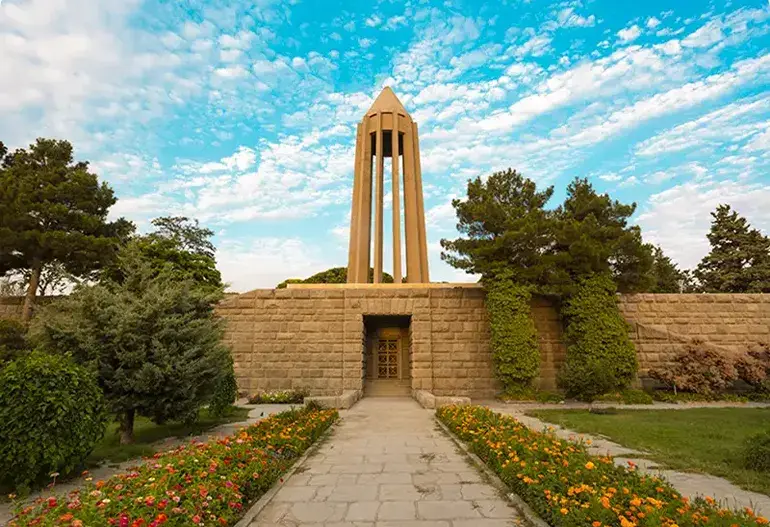
Kish, the pearl of the Persian Gulf
Kish, a tiny and naturally attractive island in the Persian Gulf, attracts a large number of tourists each year. Kish Island, with an area of 90 square kilometers, is the most contemporary Iranian island in the Persian Gulf, and people looking for thrilling and unique entertainment often select Kish Island for an unforgettable experience.
What are the attractions of Kish?
- Kish Beaches: The island is encircled by sandy beaches with crystal clear waters, making it perfect for swimming, sunbathing, and water sports.
- The Ancient Town of Harireh: The ruins of this ancient town, which date back around 800 years, offer insights into Kish's historical significance.
- Kish Dolphin Park: A unique attraction, this park is home to various marine mammals, birds, and reptiles, and offers dolphin shows which are a highlight for many visitors.
- Underground Water City (Kariz): More than 2,500 years old, this city gives visitors a glimpse into the island's ancient water management system. It's been transformed into an underground town, complete with restaurants, handicraft workshops, and galleries.
- he Greek Ship: The remains of a shipwrecked cargo vessel, which ran aground in the 1960s, has become an iconic spot for tourists, especially during sunset.
- Coral Reefs: Kish is home to some of the most beautiful coral reefs in the Persian Gulf, making it a hotspot for scuba diving and snorkeling.
- Marjan Beach Park: A favorite amongst families, it provides various recreational facilities alongside its pristine beach.
- Kish Island Aquarium: Showcasing marine life from the Persian Gulf, this is a treat for nature lovers.
- Ocean Water Park: A large water amusement park, providing a fun escape from the heat.
- Bird Garden: A sanctuary for various bird species, offering a peaceful environment for bird-watching.
- Shopping Malls and Traditional Markets: Given its duty-free status, Kish Island is a shopping paradise. From modern malls like Kish Trade Center to traditional bazaars, visitors can buy a range of goods including handicrafts, apparel, and electronics.
- Cycling Track: Kish Island has a dedicated cycling track that allows visitors to explore the island on two wheels.
- Horse Riding Clubs: For those interested in equestrian activities, there are clubs offering horse riding along the beach.
Cost of travel to Kish
| Category | Estimated Cost | Description |
|---|---|---|
| Airfare | $400 - $800 | Round-trip fare from major international airports, varying significantly based on departure city. |
| Accommodation | $30 - $200 per night | Options range from budget hotels at around $30 to luxury resorts costing upwards of $200 per night. |
| Food | $15 - $50 per day | Dining costs vary from casual meals at $15 to fine dining experiences around $50 per day. |
| Transportation | $5 - $20 per day | Local transportation includes taxis and bike rentals, with costs depending on the mode and frequency of travel. |
| Entertainment | $10 - $100 per day | Costs for activities like water sports, visiting attractions, and entertainment venues. |
| Miscellaneous | $10 - $30 | Additional expenses including souvenirs, tips, and emergency purchases. |
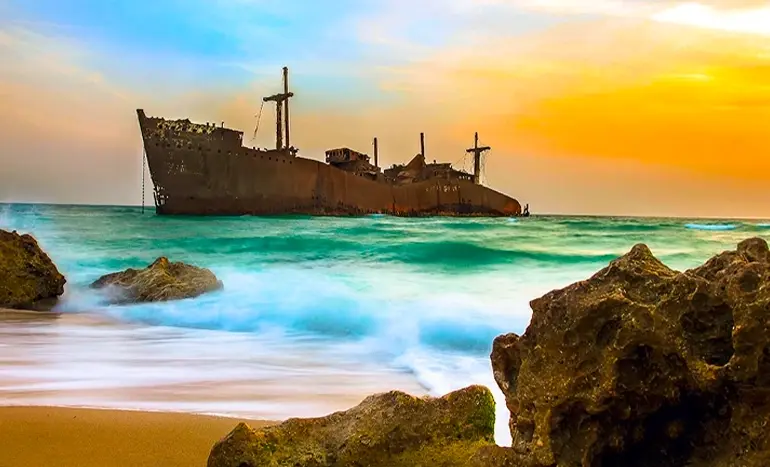
Last word
In 2024, Iran's tourism landscape remains a vibrant tapestry of ancient history, architectural wonders, and diverse experiences. Cities such as Tehran, Isfahan, Shiraz, Yazd, and Kish Island offer a blend of bustling bazaars, historic landmarks, and modern amenities. The nation's evolving tourism infrastructure complements its timeless allure, making it a prime destination for travelers. Whether you're interested in history, adventure, or spirituality, Iran's top cities provide an enriching journey. For a seamless start to your travels, consider using a car rental at Imam Khomeini International Airport.
Frequently Asked Questions About Iranian Cuisine
In the following section, we answer some of the most common questions about Persian cuisine and traditional Iranian dishes:
What are the most famous Persian dishes that tourists should try in Iran?
Iranian cuisine offers a variety of flavorful dishes. Tourists often enjoy kebabs like Koobideh and Joojeh Kebab, as well as stews like Ghormeh Sabzi and Fesenjan. Each dish reflects a unique blend of herbs, spices, and slow-cooked ingredients.
Is Persian food spicy?
Persian food is typically not very spicy compared to Indian or Mexican cuisine. It focuses more on aromatic spices such as saffron, turmeric, and dried limes, offering a rich but mild flavor.
Are there vegetarian options in Persian cuisine?
Yes! Many Persian dishes are vegetarian or can be prepared without meat. Examples include Mirza Ghasemi, Kuku Sabzi, and Ash Reshteh. These are healthy, flavorful, and popular among vegetarians visiting Iran.
Is Iranian food suitable for tourists with dietary restrictions?
Generally, yes. Since many Iranian dishes are made from fresh ingredients and prepared at home or in traditional restaurants, it’s easy to find meals suitable for halal, vegetarian, or gluten-free diets. Always inform your host or restaurant in advance.
What is the national dish of Iran?
While Iran doesn't have one official national dish, many consider Chelo Kebab (served with saffron rice and grilled meat) or Ghormeh Sabzi (herb stew) as national favorites. These dishes are deeply rooted in Persian culinary culture.
Where can tourists try authentic Persian food in Iran?
Authentic Persian food is best experienced in local restaurants, bazaar eateries, and home-cooked meals during cultural tours. Cities like Tehran, Isfahan, and Shiraz offer fantastic options for traditional Iranian dining.


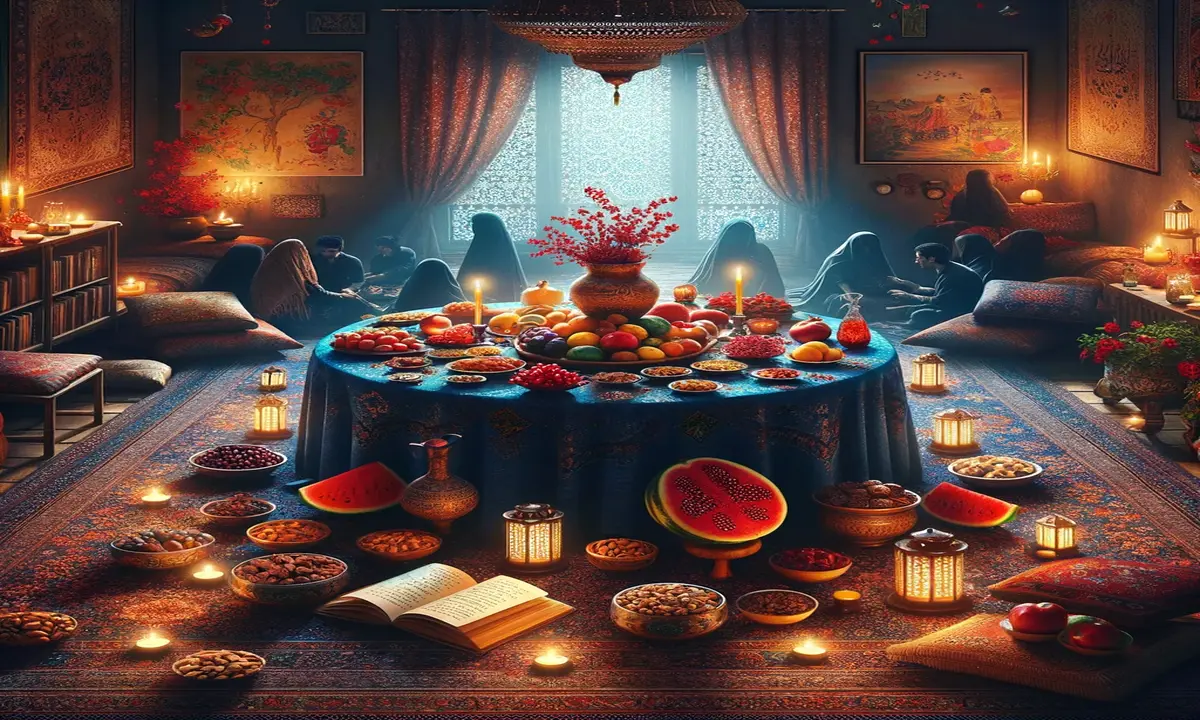
.webp)
